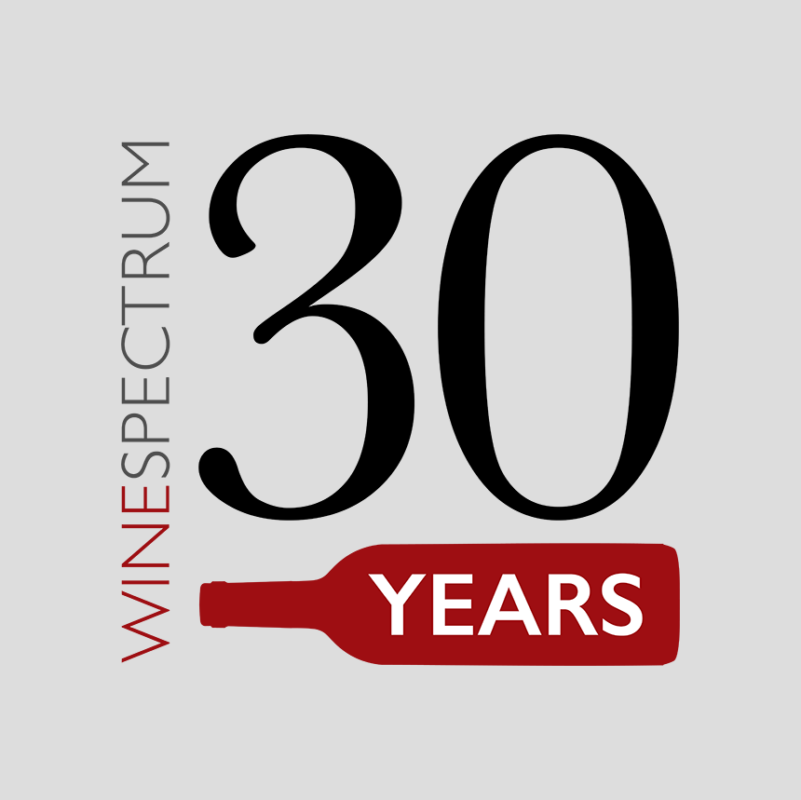Cabernet Sauvignon, Full Spectrum, Varietals
Understanding Napa Valley & Cabernet Sauvignon
The prominence of Napa Valley wine on the world stage is largely due to the efforts of their vintners during the last 50 years. People like Robert Mondavi, Napa Valley’s greatest marketer, fully embodied the collective spirit and camaraderie that gave rise to Napa Valley’s success and quality. (source)
The Judgement of Paris
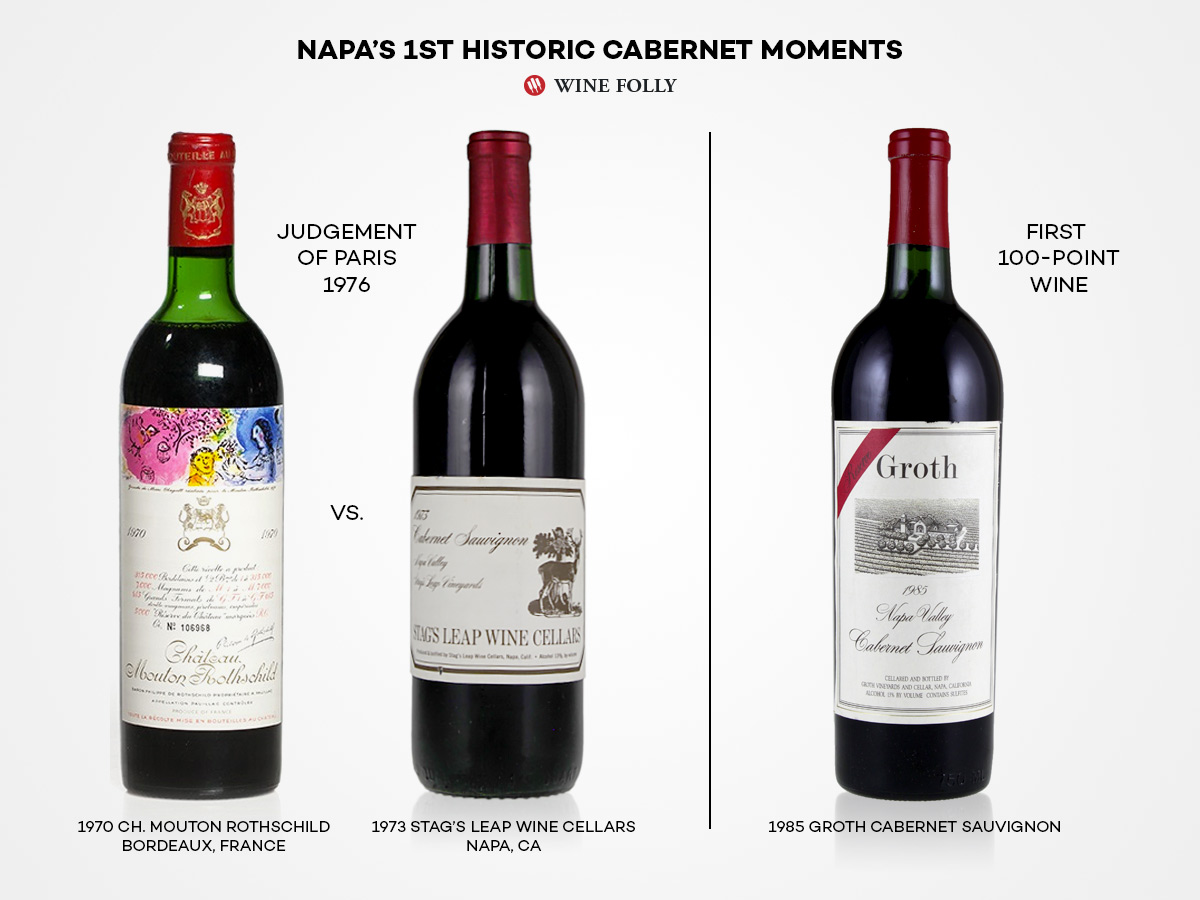
If a single event can be credited with putting Napa Valley on the map, it was the Paris Tasting of 1976. This blind, comparative tasting pitted Cabernet Sauvignon and Chardonnay from California against the best wines of Bordeaux and Burgundy in a blind tasting. When the tasting was done, the judges had given top honors to Chateau Montelena Chardonnay and Stag’s Leap Wine Cellars Cabernet Sauvignon. Napa Valley would never be the same, and the number of wineries would grow from a few dozen to several hundred today (source)
The Napa Valley is itself an AVA, and it has been since it received its own designation in 1981. It is California’s first recognized AVA and the second in the United States. Within the Napa Valley AVA exist 16 nested AVAs, including: Atlas Peak, Calistoga, Chiles Valley District, Coombsville, Diamond Mountain District, Howell Mountain, Los Carneros, Mt. Veeder, Oak Knoll District of Napa Valley, Oakville, Rutherford, St. Helena, Spring Mountain District, Stags Leap District, Yountville and Wild Horse Valley. (source)
What Makes Napa Valley Ideal for Cabernet Sauvignon?
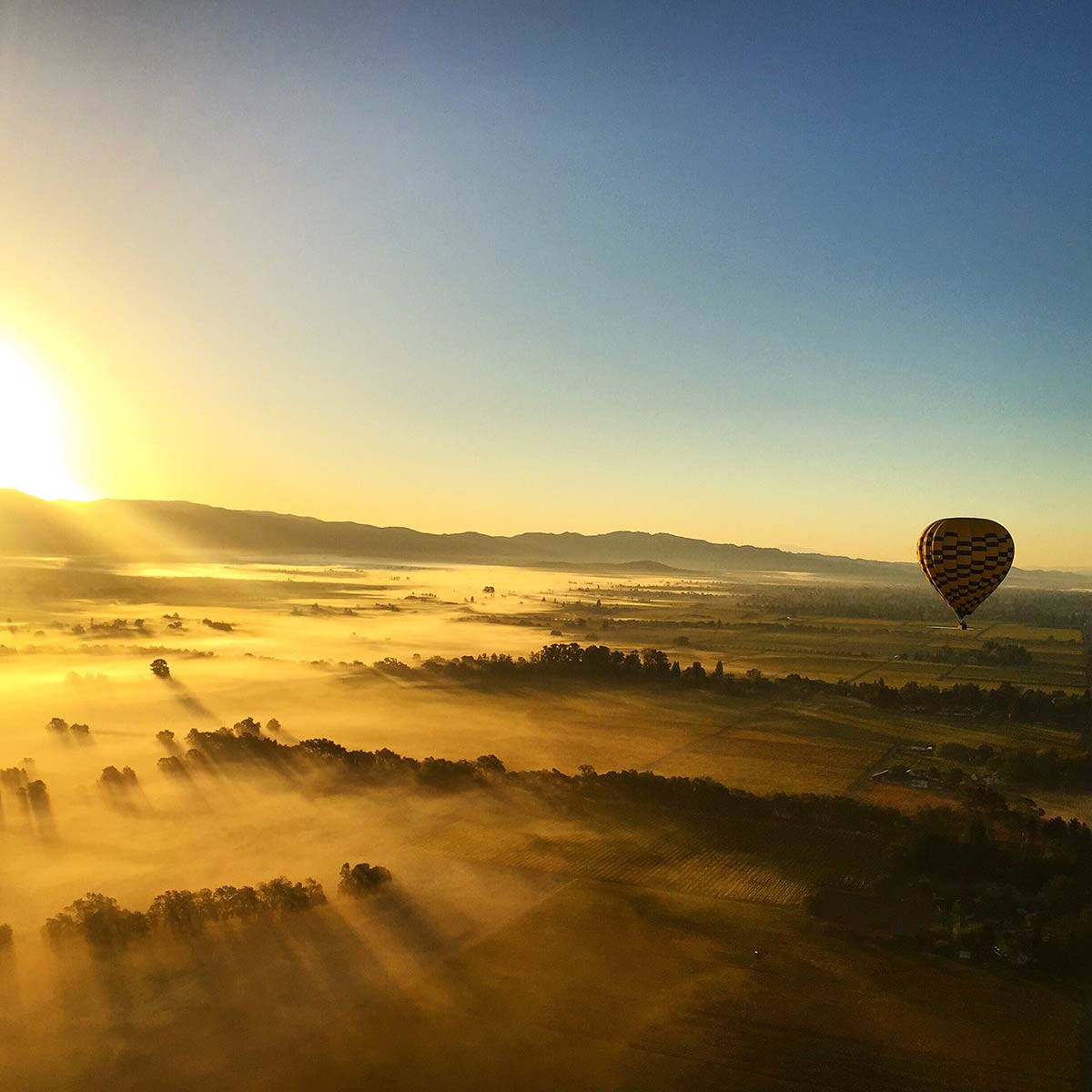
Producing great wine starts with growing great grapes. In the case of Cabernet Sauvignon vines, they have been shown to be best suited for a sunny, warm (and not too hot) climate so that the grapes ripen slowly. Napa Valley’s location on the San Pablo Bay causes an induction effect at night that delivers morning cloud cover. The morning fog slows certain aspects of ripening. Additionally, the AVAs within Napa Valley that are above the clouds (Howell Mountain, Atlas Peak, etc.) have higher elevation to use to their advantage. Higher temperature shifts between night and day in the hills slow certain aspects of ripening (e.g. by maintaining acidity). (source)
The quality of Napa’s soils…
There are many different soil types that are well-suited for Cabernet Sauvignon and ultimately what’s important is good drainage and not too much soil fertility. The low fertility puts the vines in a state of stress earlier in the growing season, which shifts the vine’s focus from growing leaves to ripening grapes. What makes Napa Valley special (especially as a New World region) is a prevalence of volcanic soils which adds an earthy, “dusty” taste to Napa’s best wines. Since earthiness and minerality are not common in New World wine regions, this “dustiness” adds complexity to Napa wines. (source)
Assessing Napa Cabernet
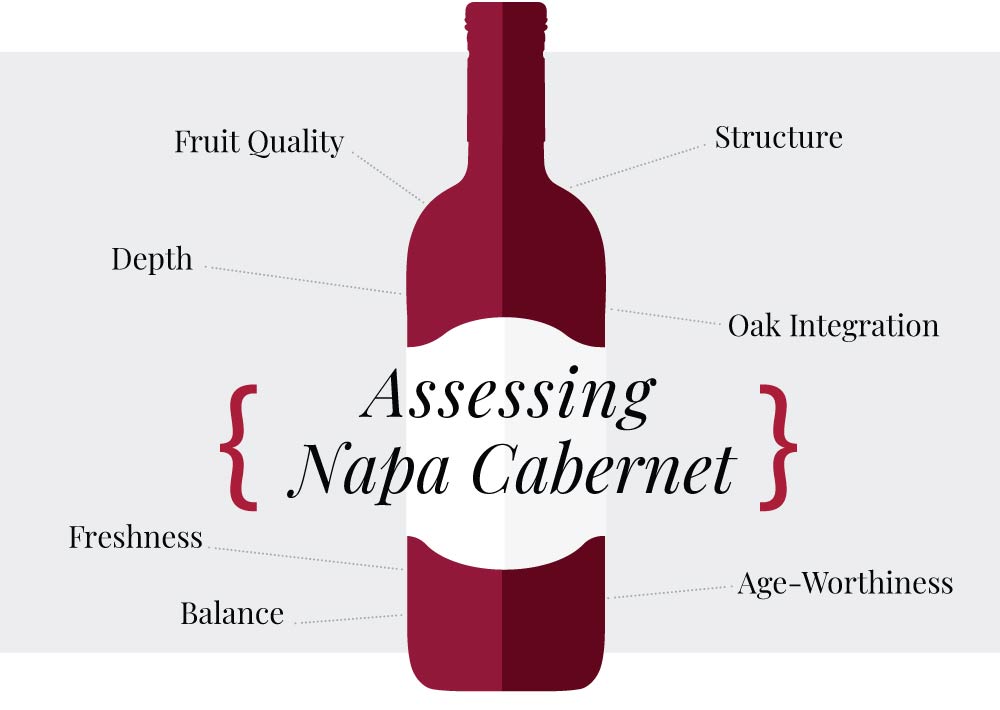
When a wine critic assesses Napa Cabernet Sauvignon there are several features and characteristics they look for:
- Fruit Quality: The best Napa Cabernet wines consistently exhibit flavors of black currant, ripe (not baked) plum, subtle licorice, black cherry, raspberry, as well as blueberry and/or blackberry. All of these tasting notes associated with Cabernet indicate the grapes were perfectly ripe when picked.
- Depth of Flavor: Having depth means that wines reveal layers of flavors that evolve over the duration of the tasting experience, which can sometimes be more than a minute long. For example, flavors may start out as fruity and then become more minerally (pencil lead or “dusty”) or floral (violets or sage) and then finish with oak-aged notes (such as cedar, mocha, espresso and tobacco) and textured with tannin.
- Freshness (Acidity): Floral notes and terms like “elegance” or “grace” indicate that the wine has good acidity–an age-worthy trait.
- Structure (Tannin): Tannins can range from fine-grained to firm, but what’s important is that they are well-integrated, meaning they match the intensity of the other components in the wine (fruit flavors, acidity, and alcohol).
- Oak: The use of oak is always present in the best Napa Cabernet wines, the question isn’t how much oak is used specifically (because it varies), but rather how that oak comes across in the taste. When used well, oak acts like seasoning that brings out the other flavors in the wine.
- Overall Balance: The highest-quality wines all have intense flavor (and a high level of color extraction) but all the components in the wine are perfectly balanced with one another.
- Age-Worthiness: While the late 1990s and early 2000s had several top Napa Cabernets with estimated aging periods of just 10-12 years, the more modern wines appear to age longer, starting at 15 or more years. (source)
Cabernet Sauvignon Styles
There are two distinct styles of Napa Cab based on where they grow. Each have their own style and unique features so it’s ultimately up to you to decide.
Napa Valley Floor Wines—Lush and refined…
- Flavors: Blueberry, Ripe Plum, Black Cherry, Licorice, Mocha, and Violet (or mint). Usually, well-rounded with more refined flavor profiles along with fine integrated tannins.
- Features: If you’re into lush, bold, and opulent Cabernet wines with a dominance of fruit (vs. other) flavors then the Napa Valley AVAs are likely to make you very happy. These wines show marvelously in their first decade and then, if you’re lucky, hit another sweet spot at around 15 or so years of age. If you follow ratings, the valley Cabs are generally well-loved by the critics too and garner the highest ratings.
Recommend:
2017 Riverain Cabernet Sauvignon Tench Vineyard Oakville Napa Valley
2016 Stormy Weather Cabernet Sauvignon Napa Valley
2018 TOR ‘Pure Magic’ Cabernet Sauvignon To-Kalon Oakville Napa Valley
Napa Hillside Wines—Dusty and bold…
- Flavors: Black Currant, Black Cherry, Wild Berry, Spicebox, Anise, Espresso, Cedar, and Sage. Wines have more rustic flavor profiles with heightened minerality and earthiness, supported by firm tannins.
- Features: If you’re into bold, smoky, and mineral driven Cabernet wines with good structure (AKA tannins) then the hillside AVAs of Napa are likely to make you very happy. The more variable temperatures on the hills produce smaller berries which add additional color and tannin to the wines. These wines generally take longer to come around due to the higher tannin (maybe 5–10 years) but when they do, they become more lithe and supple. (source)
Recommend:
2016 Dalecio Family Wines Diamond Mountain District Cabernet Sauvignon Napa Valley
2017 Mt. Brave Cabernet Sauvignon Mt. Veeder Napa Valley
2017 O’Shaughnessy Cabernet Sauvignon Howell Mountain Napa Valley
Famous Vineyards of Napa organized by AVA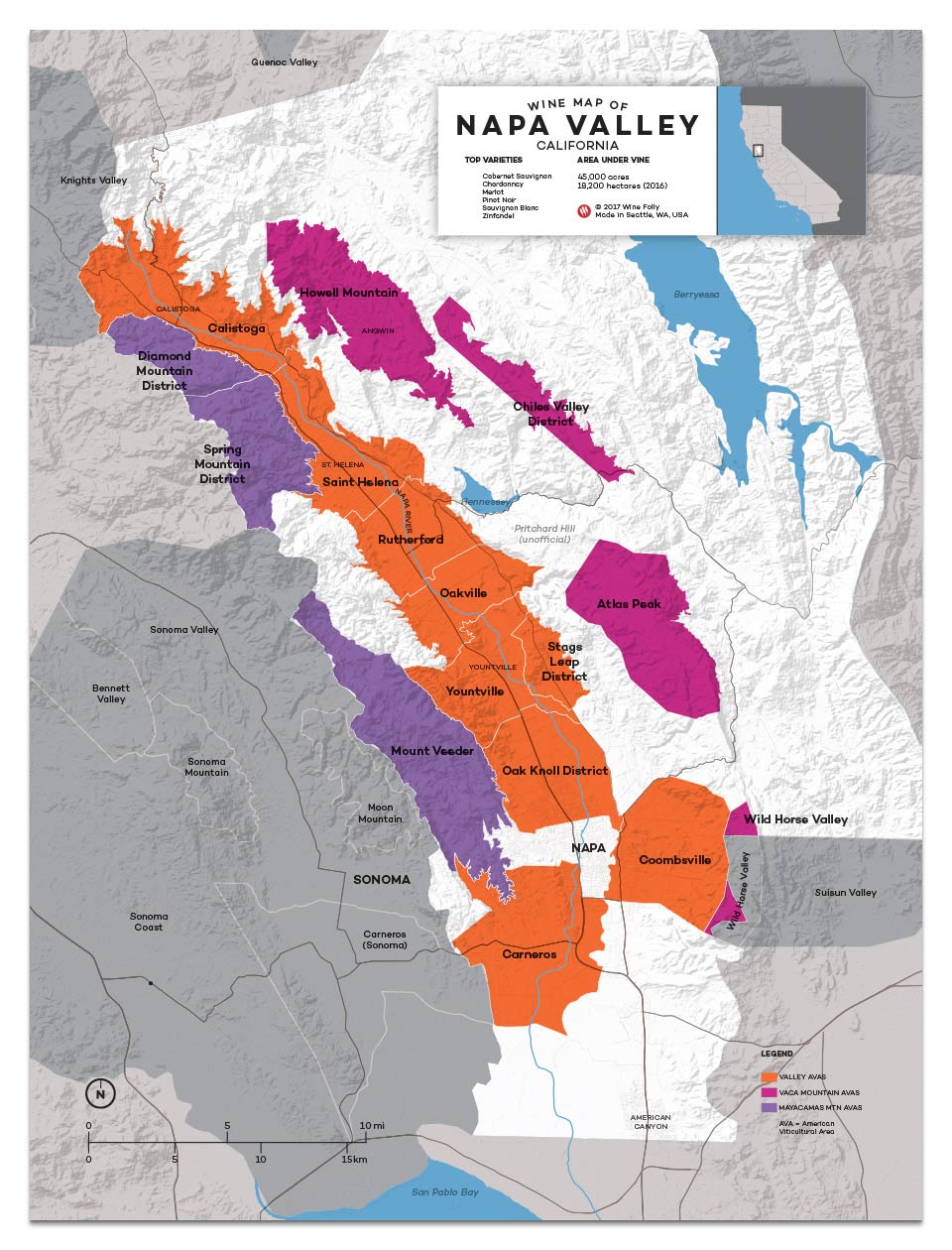
Source: Wine Folly
Here’s a list of some of the most prominent vineyards of Napa.
- Coombsville Farella Vineyard, Kenzo Estate Vineyards
- Atlas Peak Stagecoach Vineyard, Pahlmeyer Estate Vineyard
- Oakville Beckstoffer To Kalon, Harlan Estate, Screaming Eagle, Showket , Heitz Martha’s Vineyard Oakville, Beckstoffer Missouri-Hopper, Dalla Valle & Tench Vineyard
- Rutherford Staglin Vineyards, Beckstoffer Georges III
- Stag’s Leap District Fay Vineyard
- Saint Helena Spottswoode, Capella S, Madrona Ranch, Beckstoffer Dr. Crane Vineyards, Chappellet, Bryant Family
- Calistoga Eisele Vineyard, Venge Vineyard, Kenefick Vineyard & Montelena Vineyard
- Howell Mountain Thorevilos Vineyards, Herb Lamb Vineyards, Beatty Ranch Vineyards, La Jota Vineyard, W.S. Keyes Vineyard, Outpost Vineyard, Buckeye Vineyard & Cimarossa Vineyard
- Spring Mountain District Cain Vineyard, Pride Vineyard, Togni Vineyard & Lokoya Vineyard
- Diamond Mountain District Diamond Creek Volcanic Hill, Lokoya Vineyard & Checkerboard Vineyard



